#Pashto to English translation
Explore tagged Tumblr posts
Text

It could be difficult for persons whose first language is not English to translate from Pashto to English. Numerous companies and websites offer services for translation, localization, and interpreting. You can translate phrases, sentences, and words that are used frequently for free. To do this, use our online Pashto to English translator.
0 notes
Text
Online Pashtu to English Translation Services - Quickly and Accurately Translate Pashto Conversations
Pashtu to English: Unlocking Opportunities for Immigrant Families For the nearly 40 million Pashto speakers around the world, communicating across languages can often get lost in translation. As more Afghan and Pakistani immigrants settle in America, bridging the cultural and linguistic divides through accurate Pashto to English translation becomes increasingly vital. This comprehensive guide…
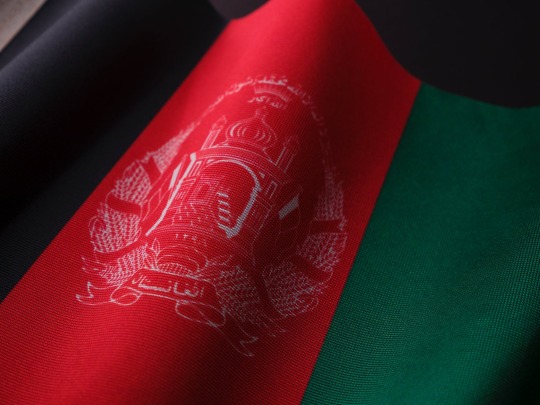
View On WordPress
#afghan immigrants#dari translation#english learners#pakhto#pakistani immigrants#pashto#pashto to english#pashto translation#pushto
0 notes
Text
translated from pashto: the poor devil is ill-named, the actual worms are inside ourselves.
Shaitan khwaar asi badnaam de, chinji kho mung ki khpala de.
#translation#pashto#english#yes i changed the wording a bit#quote#religion#faith#morality#god#quotes#poetry#prose
1 note
·
View note
Text

عن أبي موسى الأشعري رضي الله عنه: عن النبيِّ صلَّى اللهُ عليه وسلَّم : أنه كان يدعو بهذا الدعاءِ : “ربِّ اغفِرْ لي خطيئتي وجهلي، وإسرافي في أمري كلِّه، وما أنت أعلَمُ به مني . اللهم اغفِرْ لي خطاياي، وعمدي وجهلي وهَزلي، وكلُّ ذلك عِندي . اللهم اغفِرْ لي ما قدَّمْتُ وما أخَّرْتُ، وما أسرَرْتُ وما أعلَنْتُ، أنت المقدِّمُ وأنت المؤخِّرُ، وأنت على كلِّ شيءٍ قديرٌ” . صحيح البخاري ومسلم حديث ٣٦٩٨-٢٧١٩
Narrated Abu Musa: The Prophet (peace be upon him) used to invoke Allah with the following invocation: ‘Rabbi-ghfir-li Khati 'ati wa jahli wa israfi fi `Amri kullihi, wa ma anta a'lamu bihi minni. Allahumma ighfirli khatayaya wa 'amdi, wa jahli wa jiddi, wa kullu dhalika'indi. Allahumma ighrifli ma qaddamtu wa ma akhartu wa ma asrartu wa ma a'lantu. Anta-l-muqaddimu wa anta-l-mu'akh-khiru, wa anta 'ala kulli shai'in qadir.’ Sahih al-Bukhari 6398 In-book reference : Book 80, Hadith 93 Sahih Muslim 2719 a In-book reference: Book 48, Hadith 94
…وهذا الدعاء والاستغفار من النبي صلى الله عليه وسلم هو على سبيل الافتقار والعبودية لربه عز وجل، والتعليم لأمته، وأن أحداً من العباد لا يكون في غنى عن ربه وعن عفوه ورحمته ومغفرته، بل حاجة العباد إلى مغفرته ورحمته وعفوه، كحاجتهم إلى حفظه وكلاءته ورزقه؛ فإن لم يحفظهم هلكوا، وإن لم يرزقهم هلكوا، وإن لم يغفر لهم ويرحمهم هلكوا وخسروا، ولهذا قال أبوهم آدم وأمهم حواء عليهما السلام: {رَبَّنَا ظَلَمْنَا أَنْفُسَنَا وَإِنْ لَمْ تَغْفِرْ لَنَا وَتَرْحَمْنَا لَنَكُونَنَّ مِنَ الْخَاسِرِينَ}[الأعراف: 23] ، وهذا شأن ولدهما من بعدهما .
قال ابن القيم رحمه الله: «والدعاءَ عبوديةٌ لله وافتقارٌ إليه وتذلُّلٌ بين يديه، فكلَّما كثَّره العبدُ وطوَّله وأعاده وأبداه ونوَّع جُملَه كان ذلك أبلغَ في عبوديته وإظهار فقره وتذلُّـلِه وحاجته، وكان ذلك أقربَ له من ربِّه وأعظمَ لثوابه، وهذا بخلاف المخلوق، فإنَّك كلَّما كثَّرت سؤاله وكررت حوائجك إليه أبرمته وثقَّلت عليه وهِنتَ عليه، وكلما تركتَ سؤاله كان أعظمَ عنده وأحبَّ إليه، والله سبحانه كلَّما سألتَه كنتَ أقربَ إليه وأحبَّ إليه، وكلَّما أَلْححتَ عليه في الدعاء أحبَّكَ، ومَن لَم يسأل الله يغضب عليه. فالله يغضب إن تركتَ سؤاله وبُنَيُّ آدم حين يُسألُ يغضبُ »….. كامل الشرح في الملف المرفق للشيخ البدر
The following is among the comprehensive supplications of the Prophet (may Allah's peace and blessings be upon him): "O Lord, forgive me my sin" and my misdeed, and "my ignorant sins" and what I committed unknowingly. "My excess in all of my affairs", my negligence, and my transgression. "And whatever You are better aware of than me," You know it, O Allah, whereas I forgot it. "O Allah, forgive me my sins, my deliberate sins," and the sins I committed deliberately and knowingly. "My seriousness, my humor," and what was done by way of joking and what I committed in both cases. "And all this I have committed," as it collected the mentioned sins and defects. "O Allah, forgive what I have done" in the past "and what I have left undone" in the future. "What I have committed secretly" and stealthily, "and what I have committed openly" and publicly. "You are the Advancer and You are the Delayer." You make whomever You will of Your creation proceed to Your mercy through Your guidance to what pleases You, and You delay whomever You will from this through forsaking him. None can bring forward what You have delayed, and none can delay what You have put forward. "And You have absolute power over everything", possessing the absolute ability and the perfect will, You do whatever You will. Hadith Translation/ Explanation : English Urdu Spanish Indonesian Uighur Bengali French Turkish Russian Bosnian Sinhalese Indian Chinese Persian Vietnamese Tagalog Kurdish Hausa Portuguese Malayalam Telugu Swahili Tamil Thai German Pashto Assamese Swedish Amharic Dutch Gujarati Kyrgyz Nepali Romanian Hungarian الموري Oromo Georgian: https://hadeethenc.com/en/browse/hadith/5483
#حديث#أحاديث نبوية#دعاء#الرسول صلى الله عليه وسلم#صلى الله عليه وسلم#رسول الله صلى الله عليه وسلم#محمد صلى الله عليه وسلم#النبي صلى الله عليه وسلم#ادعيه اذكار تسبيح دعاء استغفار ايه صلاة صيام#dua دعاء#دعاء اليوم#رب اغفر لي#استغفار#استغفر الله#ادعية#hadith#sunnah#islam#ahadeth#hadeth#muslim#hadith sahih#duaa#prophet muhammad#prophet muhammed pbuh#supplements#forgiveness#ramadan#رمضان
38 notes
·
View notes
Text
OC Profile: Rory Sinclair


General
Name: Rory Sinclair
Callsign: Lamb
Age: 36
Date of Birth: September 5, 1988
Birthplace: Vancouver, BC, Canada
Citizenship: Canada/UK (dual)
Face Claim: Phoebe Tonkin
Occupation: British Special Forces operative
Affiliations: British Army, Special Reconnaissance Regiment (SRR), TF141
Rank: Lieutenant
Height: 5’6”
Languages: English, French, Arabic, Pashto, Russian (minimal)
Appearance
Hair: Dark brown, wavy hair. Short, choppy bob
Eye Colour: Hazel
Scars/Marks: Scar at her hairline
Tattoos: None
Piercings: 3 in each earlobe
Personality
MBTI: ESTJ-A
Enneagram: Performer (type 3)
Star Sign: Virgo
Major Arcana: The Chariot
Strengths:
Dedicated, Strong-willed, Loyal, Reliable, Efficient, Ambitious, Charismatic, Confident, Intelligent, Responsible, Compassionate, Perceptive
Weaknesses:
Stubborn, Judgemental, Difficulty expressing emotion, Perfectionist, Workaholic, Anxious tendencies
Skills
Trained in Advanced Interrogation Techniques
Underwent Scout Sniper Course (SSC) and Sniper Commanders Course
Completed her officer’s training at Sandhurst in 2020 to rank-up to Lieutenant
First Aid Level 1
Able to translate French, Arabic, and Pashto both verbally and through writing
Other Info
Received her callsign of “Lamb” due to the fact that she is often deemed less of a threat at first glance. She’s petite, has big doe eyes, and a friendly demeanor that doesn’t exactly give cold killer vibes, but underneath it all she’s a force to be reckoned with. As some would say, she is a wolf in sheep’s clothing
Loves 80’s New Wave music. Her favorite bands are Depeche Mode, Blondie, and New Order, but the genre as a whole is her preferred music to listen to
A heavy smoker. Will not be caught without her cigarettes and lighter. One of her varied coping methods for her trauma and anxiety
Diagnosed with PTSD. Symptoms include: anxiety attacks, flashbacks, hypervigilance, nightmares
A collector of fine whiskeys and scotches. Will only buy and drink top shelf.
Favorite flowers are pink roses, but is associated with lupines
Loves being outdoors. Kayaking, bike riding, running and hiking are some of her favorite activities. Also enjoys swimming
#1 coping method is to slap on a smile. Her trauma response is to joke and laugh and make light of what is troubling her. She prefers to try and hide when she’s anxious because she doesn’t like feeling pitied or making others concerned
Aesthetic
Rory would be considered high femme when not in fatigues. She enjoys the luxury she is afforded with her wealthy upbringing, and often surrounds herself with elegance and polish. She has a collection of lingerie, as well as top shelf whiskey, vintage perfume bottles, lighters, and cigarette cases.
Her signature scent is vanilla and cashmere, soft and warm, with just a hint of amber beneath.
She tends to dress more casually elegant when she’s at home, though she also has a closet of dresses and heels at her disposal as well. She can most often be found wearing a long coat, skinny jeans or wide leg trousers, and boots.

Family
Debbie Lang (Mother)
Face claim: Carla Gugino
A primary school teacher from Vancouver, Canada who cared deeply for her job, her students, and her family. She was a kind and loving presence in Rory’s life, who instilled in her the importance of doing what was right even when it’s hard. Rory’s primary guardian until her death to breast cancer that spread to her lymph nodes in 2002.
Michael Sinclair (Father)
Face claim: Hugh Grant
A defense barrister who had immigrated to Canada from London, England in 1986. He is intelligent, forthright, and proud. Became Rory’s primary guardian in 2002 after her mother’s death when she moved to the UK to live with him.


Affiliates
Captain John Price
Kate Laswell
Nikolai
Sgt. Kyle “Gaz” Garrick
Lt. Simon “Ghost” Riley
Sgt. John “Soap” MacTavish
Andrew Owen (MI6 Officer - OC)
Dr. Sydney Macallen (Military doctor - OC)


Relationship: You Are The Sword To My Shield
As of 2017, Rory has been in a long term relationship with Captain John Price of the SAS and TF141. Having served together on a mission where he acted as her commanding officer while taking down a Russian oligarch, they grew close after spending time holed up together in a safehouse. That hadn’t been the first time they met, however. In 2012, they had initially hooked up for a quick romp in the stall of a bar’s toilets thinking they would never see one another again.
Since then, the two soldiers have moved in together in Rory’s London townhouse and got engaged in early 2023. Their wedding rushed to an elopement in 2024, where they went to Russia and only Nik and Kate were in attendance due to the still looming issue of Price’s assassination of General Shepherd in cold blood.


Biography
Rory was born an only child in Vancouver, British Columbia, Canada on September 5, 1988. She was a child who had been given the world on a platter and had no reason not to succeed no matter what she put her mind to. Kind and gentle, she was the kid on the playground that made sure everyone was included. With a gift for being witty even at a young age, she made friends very easily.
Always a good student, Rory was well-liked by her peers and teachers alike, known for being active and enjoying spending most of her time outdoors. She was considered an overachiever and took part in several extracurricular sports and activities throughout her school career.
In 1996, her parents divorced after a 10 year relationship, citing irreconcilable differences, though the split was amicable. Rory was raised by her mother afterwards in their home in North Vancouver so as not to disrupt her life, while her father returned to England shortly after the proceedings, starting his own legal firm with his prestigious, noble family name. While her relationship was strained with her father after the separation, Rory still spent her summers in the UK and often kept in touch with him the rest of the year.
In 2000, her mother was diagnosed with breast cancer – an invasive ductal carcinoma or IDC – and while Debbie did seek out treatment, it proved to be a long, slow battle. The cancer ultimately spread to her lymph nodes, and resulted in her death in 2002. With no other family to act as guardian in Canada, Rory was sent to live with her father.
Enrolled in classes at the local secondary school in London to continue her education, it was expected she would easily keep up with course requirements. However with the upheaval of moving halfway across the world and the grief of losing her mother, Rory quickly fell behind in her studies and her grades began to slip. Barely graduating, she was left with little options for her future and enlisted in the military, preferring not to become a trust fund baby and live off her father’s name and reputation. A decision that her father greatly disagreed with.
Military Career
In 2006, Rory enlisted with the British Army and after her basic training was complete began her tour of Afghanistan where she served for six years. She became well-known for her calm under pressure, confidence with a weapon, and her courage. As a corporal she was awarded the King’s Medal for Bravery after completing a risky mission to save a portion of her unit who had been taken hostage by Al-Qaeda forces.
During this time she was also recommended by her commanding officer to take part in the Scout Sniper Course and joined a sniper platoon shortly after.
In 2013, she was moved to Iraq to work with the NATO alliance during the civil war. This was where she met Lt. Andrew Owen and began working more closely with American Armed Forces. Her sniper training led her to be called upon to remove high value targets and resulted in her working more closely with the CIA and undertaking black missions. This was when she learned how to complete interrogations, something she seemed to have a knack for, always having a natural perceptive quality.
In 2016, on one such black mission that had taken her into Syria, she was dealt a major blow when intel proved to be incorrect regarding the shipment of weapons and instead uncovered a human trafficking ring. The trauma of the incident resulted in Rory’s PTSD. Due to her symptoms, she was taken off active field duty and placed on desk duty instead, which resulted in her being transferred to SRR with her skillset. Her focus became anti-terrorism both at home and abroad, working as an analyst regarding scouting missions.
Her time out of the field didn’t last long however before being volunteered for a joint CIA/SAS mission in 2017, headed by Kate Laswell and Capt. John Price. (The events can be found in the fanfic “All Along the Watchtower”)
During the events of COD:MW, Rory was a sergeant with the SRR, called in after the attack on Piccadilly Circus by Laswell and Price to deal with the AQ threat, a group she had been observing during this time as part of her work. Arriving in Urzikstan after the invasion of the US Embassy, she assisted with removing the Wolf, interrogating the Butcher, and destroying Barkov’s gas lab. (The events can be found in the fanfic “Evening of Score”)
In 2020, Rory began her officer’s training at Sandhurst and was ranked up to Lieutenant. It was shortly after this that she was added as a member of Task Force 141.
*(The events of COD:MW2 are included in the fanfic “Shadow Dance” and the fic for COD:MW3 is still TBD)
#oc: rory sinclair#call of duty#call of duty oc#oc profile#cod original character#cod modern warfare#original character#skelly's ocs
37 notes
·
View notes
Note
Hello I adore your "Joonam" dividers a lot thank you have a nice day
Aww, thank you, Anon!! 💗💗 I really appreciate you saying so!
For those who didn't know:


These are my dividers that I use for selfshipping stuff. The text says جونم which is the Farsi spelling and translates to joonam. Joonam is a Persian pet name that means my soul, my will, my life. It's similarly used how English speakers would use honey or sweetheart. It's very commonly used in Dari, which is the most likely language Idrees natively speaks. The other possible language being Pashto, the two dominant languages in Afghanistan; though Dari is the more popular/most spoken. Joonam can be shortened to joon, or can be added onto a name like [Name] jaan. So you'll see variations of this in my Idrees art and writing: joonam, joon, or Cici jaan. You'll see our daughter calling me Mama jaan because that's what Idrees calls me around her. The father version of this is Baba jaan, but she just calls Idrees Dad as English is my first (and only) language so therefore that's what I call him.
Hope this was informative for those who didn't know, and thank you so much again Anon, this made my day!! 💖💖💖
#idrees#the breadwinner#گل مهتاب#idrees the breadwinner#the breadwinner idrees#arabic#languages#dividers#selfship community#selfshipping community#self ship#my art#fanart#ask#anon ask#ask me anything#thank you anon!#fictional husband#f/o community#romantic f/o#joonam#dari#persian#farsi#pashto#yumeship#yumejoshi#non sharing yume
11 notes
·
View notes
Text
I don't know if now is exactly the right time for this, considering everything that is going on, but I've had this post in the drafts for a while, so idk. A collection of random things I've noticed after a year of the QSMP in action (though I've only been involved in the fandom since late October).
Genuinely something fairly long, and I don't want to clog up anyone's feed with this mess of a post, so >
(colors don't mean anything in particular, I just needed to break up the text for my own attention span's sake)
Regardless of the fact that the translation feature exists, QSMP members always seem to make an effort to learn a few words in the language of other members. I frequented Tubbo's streams a lot, and I can remember him looking up Korean greetings back when Acau was just joining the server. Tina, while not fluent in the language, made an effort to converse with the newer Korean members in Korean on multiple occasions, and succeeded in that regard. BadBoyHalo and Foolish both went above and beyond to try to learn bits and pieces of the other languages on the server; Cellbit has been absolutely insane in picking up the languages present on the server, and even Quackity has worked on learning Portuguese behind the scenes with Mike. They aren't the only ones either, not by a long shot, though they were some of the few I watched happening in real time. The first days of different members joining the server were filled with exchanges of words and slang, and it was always incredible to watch. I could go onto the streams of Quackity or Tubbo or Tina when the new Korean members were joining, or Hugo, and walk away with a handful of new swears and slang under my belt. I find it incredible that everyone works so hard to communicate with each other beyond only the translation feature.
The impact of the QSMP was not on the permanent members of the server alone. While this is only one example of a great amount, I've been able to watch Aimsey's intermittent streams where they work on learning Brazilian Portuguese on Duolingo, their most recent only around three weeks ago. They joined Purgatory 2 months ago, but they made lasting friends with the Brazilian members of their team, and they still work on learning the language. They still talk about taking a trip down to Brazil to meet up with their fellow Purgatory 2 teammates, alongside Tubbo. I find that to be quite sweet, if I'm being frank.
The fandom has also worked across that language barrier. QSMP Language Day was one example of this (rip, such great idea, I had so much fun but oh my goodness did that day end terribly), though I have to give a shocking amount of credit to QSMP Twitter. It's always awesome to see the posts that trickle through in different languages, just seeing people discuss different headcanons and theories that they have in different languages, like it's nothing. The translation feature has come in clutch many, many times, but a lot of people have been working to genuinely learn a language since the server started. To those of you reaching your 1 year streak on Duolingo this week, I commend you. I just reached my 60 day one, and while it's not a lot compared to what some people have, it's a pretty big deal for me. I've seen Twitch chats filled with French, German, English, Spanish, Portuguese, and Korean. In one stream I could count spotting seven separate languages being spoken in the span of roughly seven minutes (not including French, idk where you guys went but I just did not spot you once): English, Spanish, Korean, Portuguese, German, Pashto, and Russian. QSMP Language Day was amazing, even if it was cut short by news about the admins, and it's just been really cool to see people communicating in their own respective first languages.
Translation in general. I've seen an uptick of translated closed captioning in videos created by different QSMP members, and while it isn't a lot, it's incredible to see when it does occur. I have to give a shout out to both Quackity and Baghera, for their translated closed captioning. Even if it's only a few videos, it's epic to see. I also find it very interesting that the only Offline TV video I've seen with closed captioning in more than one language was the one that Quackity was in, with Spanish subtitles. It shows that the creators care enough to add the captioning, and I think that's pretty awesome. It's also nice because often adding captions in another language forces you to add captions in the language you're primarily speaking throughout the video, which can help people who need context beyond the often messy auto-generated closed captions.
Fanfiction! Fanart! The most kudosed fanfiction on AO3 in Portuguese of any type is a GuapoDuo fanfic! Almost half of the top twenty most kudosed fanfictions in Portuguese on AO3 are QSMP. I talk about it a bit more in depth here, but it's still incredible to see just how dedicated this community is. I've been involved in multiple fic-gifting events and I've seen some genuinely incredible works come out of this fandom. Heck, I've created a lot of things for the QSMP that I'm incredibly proud of. I've seen some of the most incredible creative expression ever come out of this fandom. The tiniest accounts on YouTube posting full-length, colored animatics complete with the smallest of details (shout out to Artydrawsthings on YouTube for I GOT LOVE, that was absolutely incredible), fanfic authors writing massive A.U.s that explore every character in depth, and livebloggers that will analyze each and every movement to gush over it all. The fandom that the QSMP has built has been incredible, and it's been amazing to see it grow.
Just in general, the sense of community, and overall joy the QSMP has created. You can tell that this a passion project, created by someone who genuinely cared about and believed that what they were doing was something they wanted to be doing, and managed by people who believed that the project was doing great things. I think this is what made the QSMP flourish. It was built off people who were happy on the server, and it truly accomplished what it set out to accomplish: uniting communities. I could have said this two weeks ago, three, a month, five months, half a year; it would have held true nonetheless. However, for the QSMP's first anniversary, I think it's fitting to give it this achievement.
The QSMP without a doubt has its gaping flaws. That isn't something we can ignore, and it isn't something that we should try to. However, to ignore everything that this server has done in the year it has existed would be a crime in my eyes. I'm glad to have been a part of this fandom, and maybe I can't speak Portuguese or Spanish or German and I won't ever be able to French or Korean or whatever languages the QSMP will go on to add (sorry French, rip), but I know a lot more than I did when I started, and I think that the server has done a lot of good in the roughly year it has existed.
So thank you, to the fandom, to the server, and to everyone who made this happen, from the fanartists and the egg admins to Quackity at the top of it all. It's been a great ride, and I hope that it'll be able to continue.
#qsmp#happy birthday qsmp#sorta#i can't remember its exact birthday lol#quackity#baghera jones#badboyhalo#cellbit#because I talk about them a bit#I don't really know what to tag this with to be honest#y'all have been great#and it's been awesome to see how far this fandom has come since I got involved in it#shout out to bbh and yd who have been absolute gems#it's been so cool watching everyone's language skills grow both in the server and outside of it#that's really all
22 notes
·
View notes
Text

It could be difficult for persons whose first language is not English to translate from Odia to English. Numerous companies and websites offer services for translation, localization, and interpreting. You can translate phrases, sentences, and words that are used frequently for free. To do this, use our online Odia to English translator.
0 notes
Text
Countries that are no more: Sikh Empire (1799-1849)
Though short lived, this empire was notable for a few reasons. First, it was the last major bastion of native rule on the Indian Subcontinent before a century of unchecked British rule which had already been gradually expanding over the preceding century. Secondly, it was diverse & tolerant in its ethnic and religious composition, not just in the general populace but more uniquely in its administration. Finally, it was notable for the religion of its leaders, perhaps the only time in history where Sikhs reigned atop an empire. This is the Sikh Empire.
Name: In English, the empire is known as the Sikh Empire. In Persian this was translated as Sarkār-i-Khālsa or the Khālasā Rāj in Punjabi. These languages were important administratively within the empire. Essentially to mean empire or kingdom of the Sikhs. Khalsa is a Punjabi term for the Sikh community more broadly and specifically means "pure" as in one professes to follow the Sikh faith and has undergone the Amrit ritual ceremony of initiation, specifically baptism.
Language: The Sikh Empire was notable for its many languages. Persian was its administrative language at court. Persian had been the language of diplomacy, administrative and the high arts from the Middle East to the Indian Subcontinent for centuries in part due to the spread of Islam to India. It was the court language of the greatest Islamic polity in the history of India, the Mughal Empire (1526-1857). Other languages which in the empire included Indo-Aryan languages such as Punjabi which was the dynastic native tongue of the ruling family and various Punjabi dialects which made up the lingua franca of the core territory of the empire. Kashmiri and Dogri were spoken in some parts as well, also Pashto (Pashtun) also known as Afghani. There were numerous others which also took place in its territory in modern India, Pakistan and Afghanistan.
Territory: At its peak, the empire held roughly 200,000 sq miles of territory. The territory was centered in the Punjab region of modern Northwestern India and Eastern Pakistan. It covered territory in the modern states of India, Pakistan, the Afghanistan & Pakistan border and even small parts of Western Tibet in modern China.
Symbols & Mottos: The motto of the empire was ਅਕਾਲ ਸਹਾਇ Akāl Sahāi which is Punjabi for "With God's Grace" and its anthem was ਦੇਗ ਤੇਗ ਫ਼ਤਿਹ Dēġ Tēġ Fatih Punjabi for "Victory to Charity and Arms." The also used a triangled flag called the Nishan Sahib. This flag was used by Sikhs prior to the 1799 establishment of the empire and continued to have use after its 1849 disestablishment. It is usually depicted as an orange inner field with a green outer field with golden trim and patterns both on the green outer field and orange inner field. There were also individual flags for various Sikh, Hindu and Muslim regiments within the army as well. The Muslim ones often sharing similarity with the modern Pakistan flag.
Religion: Sikhism was the dynastic religion and religion of roughly 6-12 percent of the overall population. 50-80 percent of the populace was Muslim and 10-40 percent Hindu. There were also smaller populations of Christians and Jews as well. Religious tolerance was practiced as a matter of policy throughout the empire. Sikhs certainly benefitted from a ruling dynasty that was of their community however with larger populations of Muslims and Hindus among their territory, policies of accommodation and tolerance were practiced to other faiths as well. Likewise Indian and European Christians could practice their faith and rise to important military and government positions and even some Jews featured in the military as well. Promotion within the military and government more broadly had less to do with religion, ethnicity or geographic origin than with merit and personal loyalty.
Currency: The currency of the empire was called Nanak Shahi Sikee, these were metal coins usually of silver composition.
Population: The population was estimated to be roughly 12 million people at its peak in in the late 1830s and early 1840s.
Government: The government could be characterized as a federal monarchy with a later adoption of elements of absolute monarchy. Its origins lie in the Sikh community which started in the Punjab region of the Indian Subcontinent. This region consists of modern Pakistan (mostly) and some of India (remaining portion). It spans the five major rivers west to east (Indus, Jhelum, Chenab, Ravi & Sutlej). Sikhism had its origins and greatest core in the Punjab region among Punjabis. Though it is a relatively young religion by comparison to Hinduism and Islam, elements of overlap and interaction with both of these older faiths have influenced it. Nonetheless, Sikhs faced alternating periods of tolerance and persecution throughout the Mughal Empire and many Sikhs hid in jungles near the Himalayan foothills as refuge from the Muslim Mughals and various local Hindu hill tribal chiefs who persecuted them.
In response to this persecution from their neighbors, Sikhs formed militias to protect their religion community, these militias were called jathas and in turn these formed into a larger Dal Khalsa (Sikh army) circa 1735-1738. in 1748 at Amritsar, India, the most holy city for Sikhs in 1748 these militias were reorganized into a misl which is an Arabic term for equal. These misls became known as the Sikh Confederacy or Misl period (1748-1799). There were twelve sovereign Sikh misls formed and later a Muslim ruled misl which created a federation or confederacy united by Sikhism to preserve and protect their religious faith. There was uneven strength between the misls and some tried to expand at the expense of others, but they still formed a common defense of their community and even held biannual legislative meetings in Amritsar to address matters of the community.
The Mughal Empire suffered major decline in the 18th century following the death of its emperor Aurangzeb in 1707. The combination of a ruined economy from expensive wars, decentralization of power and the expanse of the Hindu oriented Maratha Empire (1674-1818) from the Western Deccan Plateau all contributed to its decline and creation of a power vacuum in parts of India, including the Punjab. To make matters worse, Nader Shah, the Shah of Persia invaded the Mughal Empire in 1739 and sacked the Mughal capital at Delhi. The plundering of riches from the Mughal capital was so great that Persia experienced three years exempt from all internal taxes. In this context the already persecuted Sikhs sought greater mutual defense, though their political autonomy remained relative to their respective misl. Despite the occasion inter-fighting with each other. Other problems came from the Afghan Durrani Empire which grew in the wake of Nader Shah's passing in Iran. The Durrani Empire would expand into Northern India including the Punjab and make the Mughals their vassals especially after defeating the Maratha Empire in 1761 at the Third Battle of Panipat. The Afghans would battle the Sikh Misls many times which aimed to defend themselves in the power vacuum from the Mughal decline.
The founder of the Sikh Empire proper, who united all the thirteen misls was a man named Ranjit Singh (1780-1839) who was of Jat-Punjabi ethnic origin and specifically Jat Sikh ethnoreligious families. His father Maja Singh and grandfather Charat Singh were the founders and chiefs of the Sukerchakia Misl. Ranjit was afflicted with smallpox as a child and left him blind in his left eye and scarred on his body, features which were noted by observers from Europe later in life.
Ranjit's father died when he was 12 and he took over chiefdom of the Sukerchakia Misl which was among the five most power Sikh misls. Through marriage Ranjit had alliances with two of the other top five misls. The Kasur misl near the major city and traditional capital of the Punjab of Lahore was controlled by a Muslim who assisted the Afghans in their invasions of India. Ranjit Singh defeated an Afghan invasion in 1797 in battle. In 1798 another Afghan army was checked by Ranjit Singh through scorched earth tactics.
in 1799 Ranjit Singh took Lahore using a combined 50,000 strong army made from his misl and that of his mother-in-law. This was traditionally dated as the founding of the Sikh Empire as Lahore would serve as its capital but Ranjit Singh would be formally vested as the Maharaja (King) of the Punjab in 1801.
Ranjit Singh held many titles, but the principal ones were Maharaja of the Punjab and Sarkar Khalsaji (Head of the Khalsa) which showed his titular leader status over the Sikh army and other misls. His authority was both geographic in nature and communal-religious in nature (to a degree).
Ranjit Singh would rule and expand the Sikh Empire until his death in 1839. The empire would survive roughly a decade after his demise.
Ranjit Singh was tolerant towards background in his governance and believed in merit and loyalty above all else. He hired Sikhs, Muslims, Hindus and Christians into his military and civil administration. These could also be Indians and Europeans with some French, Italian, Spanish, Russian & German officers taking leadership within his military. Even a few American adventurers such as Josiah Harlan and Alexander Gardner found work within Ranjit Singh's empire. The former Harlan (born to Quakers in Pennsylvania) taking on a governorship and the latter Gardner who was said to be born to a Scottish or Irish (possibly Scots-Irish) fur trader in modern day Wisconsin and had travelled to Central Asia dressed in a turban decked in Scottish tartan pattern joined the Sikh Empire's military where he served as a colonel and commanded the artillery. Ranjit refrained from hiring British officers joining his ranks but still communicated with the British East India Company which was Britain's state sponsored corporation bent on controlling India for its geostrategic and economic benefits. He relented slightly after 1835 and hired some British into his ranks.
Ranjit was secular and tolerant in his rule overall but personally followed Sikhism, he restored Sikh Gurdwaras (temples) and also prayed with Hindus in their own temples and upheld the Hindu sacred protection of cows and prevented their slaughter under punishment by death. Likewise, he had standing orders that his army was never to loot or molest civilians especially when conquering new territory and to not destroy houses of worship. All discipline was to be strictly enforced under his order. Observers noted that Ranjit would increase the salary of those who didn't engage in corruption and slice the nose off of those who were said to misbehave or act corruptly in his administration of state affairs. The mutilation was not only physical discipline but a psychological scar to deter bad behavior and forever mark one as untrustworthy.
The above is the consensus of most accounts, there are some Muslim accounts from the mid-19th century which portray Ranjit's reign as despotic and biased towards Kashmiri Muslims. The overall picture is one of a complex individual but generally agreed upon to be tough and strict at times but also overall pragmatic and not willing to let religious or national background create a personal bias towards their utilization in his administration.
After Ranjit's death the rules of succession weren't clearly established and in quick succession his son, grandson and subsequently two other sons ruled in his wake with his son Duleep Singh reigning the longest from 1843-1849. Duleep would later live in exile in Europe following defeat his by the British.
Military: The Sikh Khalsa Army at its peak in 1839 was roughly 125,000 men strong and it had infantry, cavalry and artillery components. Its origins lied in the Sikh jathas of the late 17th and early 18th centuries which passed onto the Sikh Misl (Confederacy) period of the later 18th century. These were typically cavalry based and engaged in hit and run tactics against the Mughals, Maratha and Afghans. Later Ranjit would modernize the Sikh army along European principles utilizing European and American recruited officers and by purchasing and developing modern weapons.
The military were given performance standards for logistics of troop deployment, maneuver and marksmanship. Likewise, the army was divided into three segments of elite troops, regulars and irregulars. Each with its own infantry, cavalry and artillery component. Even European style medals and awards for merit could be issued, including the Order of Merit with Ranjit's portrait featured on the medal.
Ultimately, the empire's military was a synthesis of modern (19th century) Western organization, discipline and technology with the original Indian cavalry hit and tactics and methods of its Sikh jatha forebearers.
Its infantry composition was not just Western officers and Sikhs of the Punjab for originally Sikhs looked down upon the infantry and so Afghans, Dogras and Nepali Gurkhas among others filled the infantry ranks. In time Punjabi Sikhs joined its ranks too. It reached over 50,000 in strength.
The cavalry reached a strength of 10,000 strong and consisted of Sikhs mainly, given their traditional use of cavalry dating back to jatha and misl eras preceding the 19th century.
The artillery was made up of 5,000 gunners at its peak with heavy cannons pulled by elephants, medium cannon pulled by oxen, light cannon pulled by horses and some mixed guns pulled by camels.
The traditional enemies of the empire in war consisted of the Afghans who presented its greatest threat from the West, the Sikhs pushed the Afghans from the Punjab and pressed into Afghanistan itself before being checked at the border, this demarcated the empire's western limit.
Other enemies included the Kingdom of Nepal which the Sikhs defeated. The Sikh Empire and its vassal the Dogra Rajput also fought against the Chinese Qing Empire and its vassal Tibet which resulted into a military stalemate but saw brief occupation of parts of Western Tibet in the early 1840s.
Its terminal enemy was the British East India Company which would face and defeat the Sikh Empire in two wars (1845-1846 and 1848-1849). The second war would lead to the British annexation of the Punjab and formal cessation of the Sikh Empire.
Lifespan: The empire's origins date back to the 18th century formation of the Sikh Misls within the Punjab and its gradual union under Ranjit Singh. Formally dated to start his 1799 capture of Lahore. In 1801 Ranjit was formally coronated as Maharaja of the Punjab.
Over the next several decades the empire would expand in several directions with the gradual defeat of the Afghans and Marathas who warred in the vicinity of the Punjab.
1809 saw Ranjit Singh sign a treaty of friendship with the British East India Company (EIC). This treaty requested Sikh help against the French should they attack EIC possessions elsewhere in India. Also, the Sikhs were not to pursue conquest south of the Sutlej River which acted as a border between Sikh and British spheres of influence. In reality this bought Ranjit time to focus on expanding against the Afghans in Punjab and Kashmir.
The empire expanded well into the fall reaches beyond Kashmir and Jammu and gained vassals in the Ladakh region. Likewise, the Sikhs would go onto fight the Nepalese (Gurkhas) and check their advance towards Kashmir.
The empire's lifespan very much mirrored with its founder Ranjit Singh's. Ranjit Singh had unified the Sikh Misls of the Punjab through alliance and conquest, and he driven out the Afghan invaders and expanded the Sikh polity he created to vast territories with tributary states of its own. He also gained riches from conquest, meritorious tax collections and trade agreements. Financed religious temple constructions of various faiths and modernized the military. Yet while his empire was on the surface strong, it was to peak with his demise in 1839. His health had declined in the 1830s due to a stroke and alcoholism as noted by many observers. He was said to treat his chronic pain with alcohol and opium though conversely, he refused to eat beef or smoke and was somewhat health conscious. Ultimately it was said he died of a combination of stroke and his failing liver due to his excessive alcohol consumption. He was cremated and four of his Hindu wives are said to have committed sati (ritualistic devotional suicide of widows by casting oneself onto the husband's burning funeral pyre) in a final act of martial devotion to their departed spouse.
In Ranjit Singh's wake, his sons and grandsons found themselves competing for succession, their were deep internal divisions and who to support and in quick order a son, grandson and two more sons of Ranjit took control with the youngest son Duleep Singh taking "control" at age five in 1843 and he would nominally reign for six years. He had a regency under his mother Jind Kaur for the years of his rule.
Following Ranjit's death, the internal division over support of his successors along with the ruling elite of the army which saw itself as the true extension of state and religion was convinced to go to war with the British in 1845-46. The Sikh administrators were said by the British to undermine the plurality and tolerance under Ranjit Singh towards other religions pushing for a Sikh supremacy in all matters. In response, the British began building a military presence along the Sutlej River, viewed as a provocation by the Sikhs. The British stated it was defensive in nature given what they saw as increasing chaos in the Sikh Empire. However, the Sikhs contend it was intended as offensive in nature to goad the empire into war. Whatever the varied causes war began in late 1845 and concluded with British victory in 1846. The result was the partial subjugation of the Sikh Empire with some territory and monies being ceded to the British. Also, separately Kashmir would be sold the to the princely state of Jammu (under British sponsorship).
Tensions between both the Sikhs and British remained which culminated in a second war in 1848-49 and saw the Sikhs fight valiantly but once more defeated. In April 1849 at Lahore, the British annexed the Punjab up to the fortress of Peshawar, gateway to the Khyber Pass towards Afghanistan. The British East India Company turned the Sikh Empire into the Punjab and North-West Frontier Province regions in modern Pakistan and India.
The British were impressed with the military prowess of the Sikhs, in part due to the religious devotion of its troops and in part due to the modernization efforts of Ranjit Singh and his able commanders. The conquest of the Sikh Empire served as the removal of last major obstacle to British rule over the whole of India. Recognizing the prowess of Sikh troops, the British were quick to incorporate them into the British Indian Army. A role they would play from the 1850s including during the Indian Rebellion of 1857 until World War II and the eventual granting of independence to India and Pakistan.
Duleep Singh was brought up in exile in Europe following the British annexation of the Sikh Empire, his teenage years spent in Scotland. He would go onto have family there and the Crown Jewels of the UK now in possession of the British Royal Family would incorporate some of its jewels taken from the Sikh Empire's Duleep Singh. Queen Victoria received the Koh-i-noor diamond which is set in the Queen Mother's crown to this day. The diamond dates back to the Mughal Empire and changed hands with the Persian looting of Delhi to Nader Shah before ending up in the Durrani Empire of Afghanistan and then the Sikh Empire under Ranjit Singh and finally with the British as a gift to Queen Victoria as it was formally surrendered to the EIC and then gifted to the queen. The modern governments of India, Pakistan Afghanistan (including the Taliban) and Iran have all demanded its return to them respectively, a demand which Britain's government has rejected. In 2018, India's Supreme Court & the Archeological Survey of India supported Britain's legal claim, stating the Treaty of Lahore in 1849 secured it through voluntary surrender, stating it was neither stolen nor taken by force, so it remains with the British Crown despite ongoing controversy.
Though the Sikh Empire lasted only half a century for the reasons outlined above, it is a polity worthy of study. First and foremost, its historical place in India as the last major bastion of independent native resistance before total British rule has endeared it to some Indian and Pakistani nationalists and international anticolonial narratives. The British recognized through its occasional defeats in battle at the hands of the Sikhs that they were a force to be reckoned with. Both sides earned a begrudging martial respect for the other following the two wars they fought. The British were keen to utilize the Sikhs for their own military, for which they served over the next century in many campaigns worldwide. Outside from its place in narratives of native resistance to colonial rule and its well-founded military prowess. The empire is relatively unique for its synthesis of administrative help from both within India and the West. Much of this can be chalked up to Ranjit Singh's personally pragmatic and disciplined approach to governance. Quite simply put Ranjit Singh wanted what he thought were the most qualified leaders regardless of ethnic or cultural background. Their merit as modernizers and reformers coupled with personal loyalty were prized above religious or ethnic affinity. Finally, the Sikh Empire is noteworthy simply for being to date the only Sikh run imperial polity in world history. Though it was the successor of the Sikh Misls which had a unified common defense, these misls were essentially politically independent in their own right rather than a singular polity. The Sikh Empire is the only time in history that a ruling dynasty over a vast territorial expanse came from practitioners of that religion and it was supported by an army and administration centered around that faith as well.
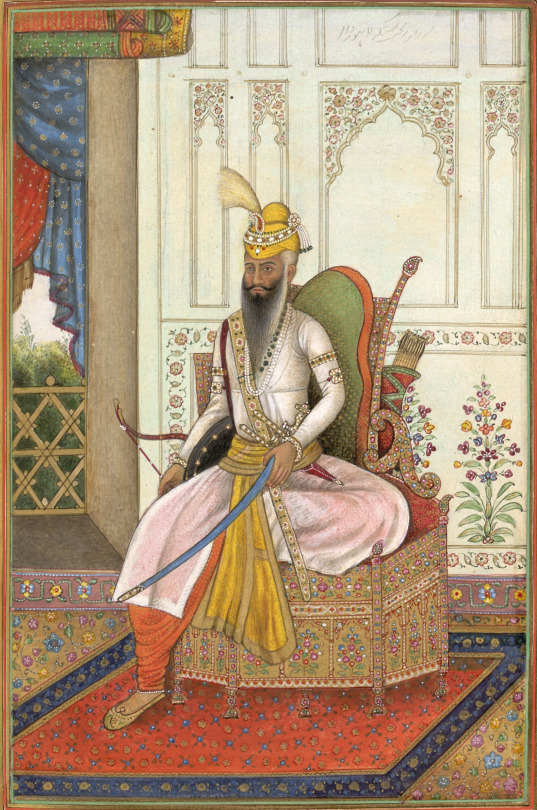

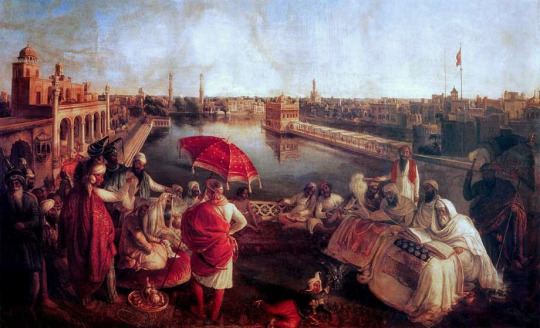

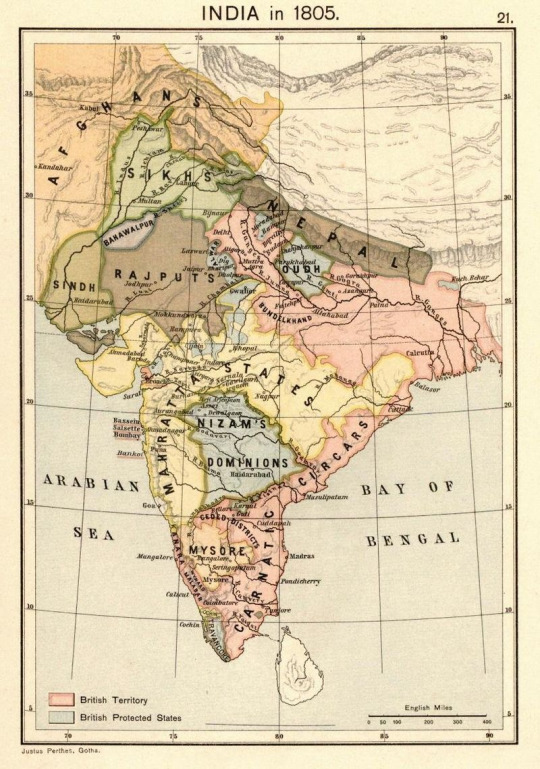
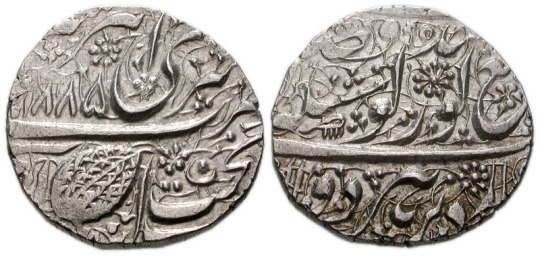
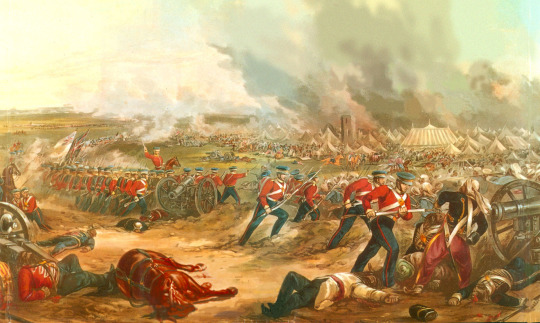
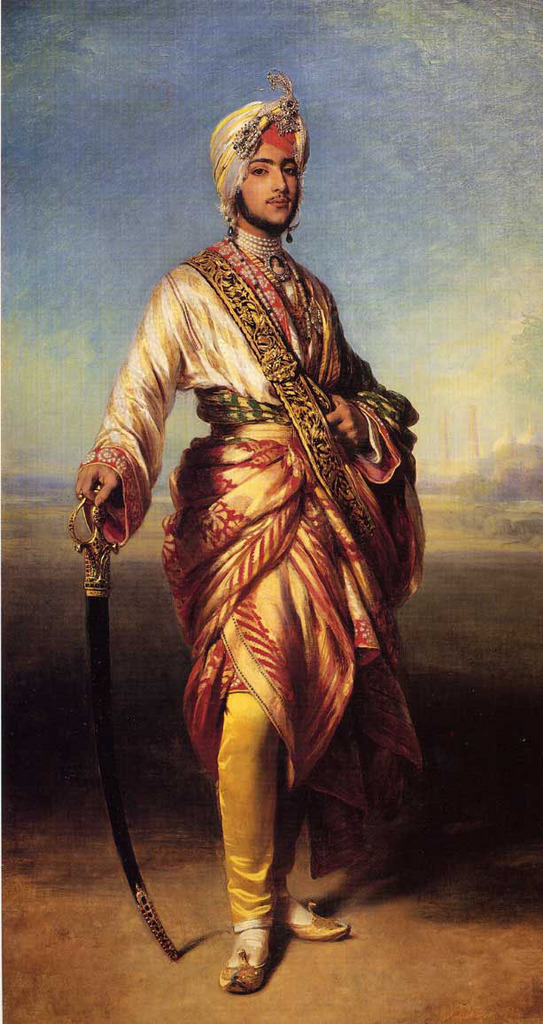
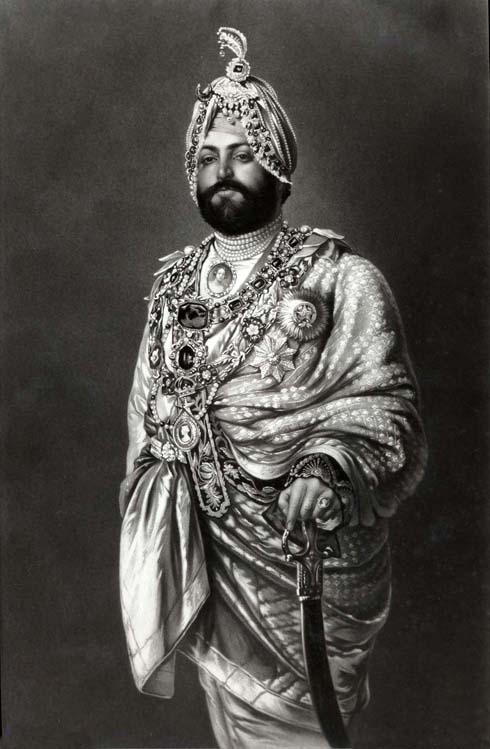
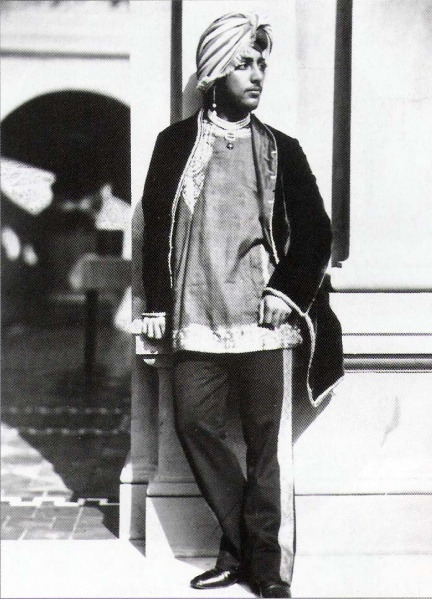
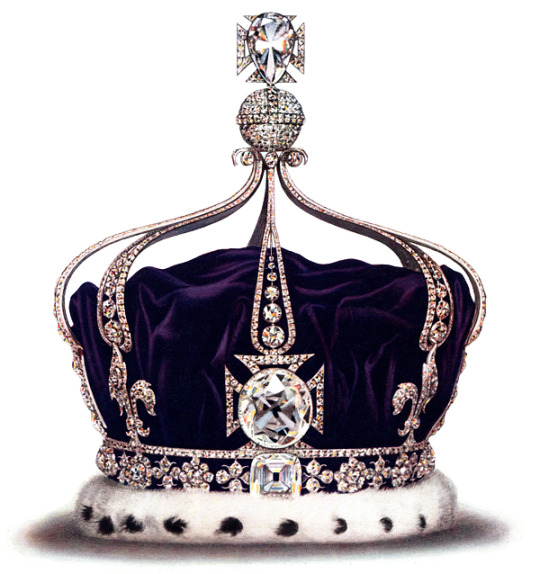
#military history#history#sikh#sikhism#india#british east india company#british imperialism#british empire#19th century#victorian era#ranjit singh#punjab#pakistan#18th century#mughal empire#maratha empire#queen victoria#british india
7 notes
·
View notes
Text
women in translation month wrap-up
here's what i read this witmonth, faves marked with *
das verbotene notizbuch, alba de céspedes (translated from the italian by verena from koskull, english translation: forbidden notebook, by ann goldstein)
salomés zorn, simone atangana bekono (translated from the dutch by ira wilhelm, no english translation yet)
witches, brenda lozano (translated from the spanish by heather cleary)
*three summers, margarita liberaki (translated from the greek by karen van dyck)
breasts and eggs, mieko kawakami (translated from the japanese by sam bett & david boyd)
im park der prächtigen schwestern, camila sosa villada (translated from the spanish by svenja becker, english translation: bad girls, by kit maude)
*boulder, eva baltasar (translated from the catalan by julia sanches): READ BOULDER BY EVA BALTASAR
sweet days of discipline, fleur jaeggy (translated from the italian by tim parks)
the wandering, intan paramaditha (translated from the indonesian by stephen j. epstein)
my pen is the wing of a bird, anthology of short stories by afghan women, translated from dari & pashto
all your children, scattered, beata umbyeyi mairesse (translated from the french by alison anderson)
*waking lions, ayelet gundar-goshen (translated from the hebrew by sondra silverston)
*the lover, marguerite duras (translated from the french by barbara bray)
*trieste, daša drndić (translated from the croatian by ellen elias-bursać)
evil flowers, gunnhild øyehaug (translated from the norwegian by kari dickson)
*empty wardrobes, maria judite de carvalho (translated from the portuguese by margaret jull costa)
die tochter, kim hye-jin (translated from the korean by lee ki-hyang, english translation: concerning my daughter, by jamie chang)
still reading:
the books of jacob, olga tokarczuk (translated from the polish by jennifer croft
mister n, najwa barakat (translated from the arabic by luke leafgren)
11 notes
·
View notes
Text
“We had been given hastily made Pashto and Dari “pointie-talkie” cards, which listed English phrases appropriate to our situation, such as “drop your weapon, or I will shoot,” and then gave both their written and phonetic translations.“
- Nate Fick, One Bullet Away. (p. 109)
2 notes
·
View notes
Text
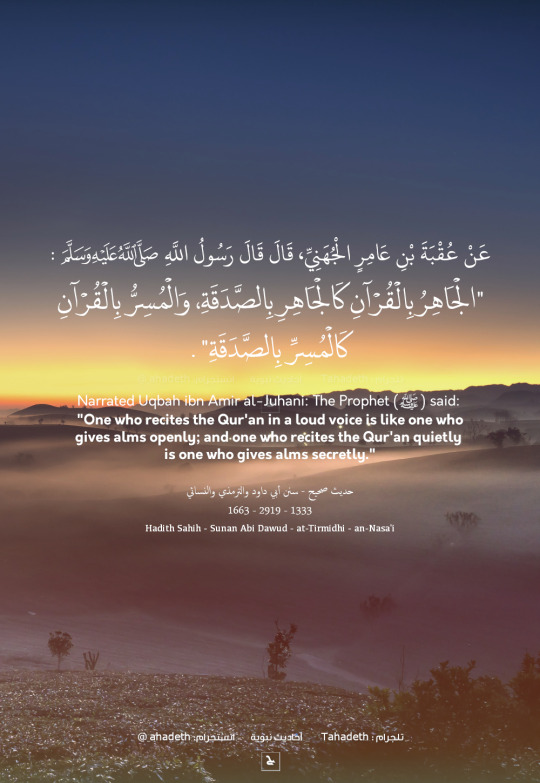
عَنْ عُقْبَةَ بْنِ عَامِرٍ الْجُهَنِيِّ، قَالَ قَالَ رَسُولُ اللَّهِ صلى الله عليه وسلم : " الْجَاهِرُ بِالْقُرْآنِ كَالْجَاهِرِ بِالصَّدَقَةِ، وَالْمُسِرُّ بِالْقُرْآنِ كَالْمُسِرِّ بِالصَّدَقَةِ " . حديث صحيح - سنن أبي داود ١٣٣٣ - والترمذي ٢٩١٩- والنسائي ١٦٦٣
Narrated Uqbah ibn Amir al-Juhani: The Prophet (ﷺ) said: "One who recites the Qur'an in a loud voice is like one who gives alms openly; and one who recites the Qur'an quietly is one who gives alms secretly." Hadith Sahih - Sunan Abi Dawud 1333 In-book reference : Book 5, Hadith 84 | Jami` at-Tirmidhi 2919 In-book reference : Book 45, Hadith 45 | Sunan an-Nasa'i 2561 In-book reference : Book 23, Hadith 127
قال الترمذي: وَمَعْنَى هَذَا الْحَدِيثِ أَنَّ الَّذِي يُسِرُّ بِقِرَاءَةِ الْقُرْآنِ أَفْضَلُ مِنَ الَّذِي يَجْهَرُ بِقِرَاءَةِ الْقُرْآنِ لأَنَّ صَدَقَةَ السِّرِّ أَفْضَلُ عِنْدَ أَهْلِ الْعِلْمِ مِنْ صَدَقَةِ الْعَلاَنِيَةِ وَإِنَّمَا مَعْنَى هَذَا عِنْدَ أَهْلِ الْعِلْمِ لِكَىْ يَأْمَنَ الرَّجُلُ مِنَ الْعُجُبِ لأَنَّ الَّذِي يُسِرُّ الْعَمَلَ لاَ يُخَافُ عَلَيْهِ الْعُجْبُ مَا يُخَافُ عَلَيْهِ مِنْ عَلاَنِيَتِهِ . جامع الترمذي
العِباداتُ كلُّها يَنبَغي أن تَكونَ خالِصةً لوجهِ اللهِ، ولا يُطلَبَ بها الرِّياءُ ولا السُّمعةُ ولا التَّفاخرُ بينَ النَّاسِ؛ لأنَّ اللهَ غنيٌّ عن كلِّ ذلك، وإنَّما يَقبَلُ مِن تلك العباداتِ ما كان خالِصًا لوجهِه سبحانَه. وفي هذا الحديثِ يَقولُ النَّبيُّ صلَّى اللهُ علَيْه وسلَّم: "الجاهرُ بالقرآنِ"، أي: الَّذي يَرفَعُ صوتَه بالقرآنِ في القِراءةِ، وخاصَّة أمامَ النَّاسِ؛ "كالجاهرِ بالصَّدقةِ"، أي: مِثلُ المُجاهِرِ المُعلِنِ لصَدقتِه أمامَ النَّاسِ "والمُسِرُّ بالقرآنِ كالمُسِرِّ بالصَّدقةِ"، أي: مَن يقرَأُ في سِرِّه ويتَدبَّرُ بعَقلِه مِثل الَّذي يُخفِي صَدَقتَه عن أعيُنِ النَّاسِ، والإسرارُ أفضلُ في حَقِّ مَن يَخافُ الرِّياءَ؛ لأنَّ الإسرارَ أبعدُ عن الرِّياءِ؛ فإنْ لم يَخَفْ، فالجهرُ أفضلُ بشَرْط ألَّا يُؤذِي غيرَه ولا يتأذَّى بقِراءتِه أحدٌ كمُصلٍّ أو نائمٍ أو غيرِهما، والعملُ في الجَهرِ أكثرُ، ويَتعدَّى نفْعُه إلى غيرِ القارئِ؛ ويُوقِظُ قلبَ القارِئ، ويَجمَع همَّه إلى الفِكر، ويصرِفُ سمْعَه إليه؛ ويطرُد النومَ، ويزيدُ في النشاط؛ فمتَى حضَره شيءٌ من هذه النِّيات؛ فالجهرُ أفضلُ؛ فإذا كان الجهرُ يترتَّبُ عليه مصلحةٌ، فهذا الجهرِ أوْلَى، وإذا لم يَكُن في الجَهرِ مَصلحةٌ فالإسرارُ أَوْلَى، فهذا أفضلُ مِن هذه الناحيةِ. وقيل: ما كان فيه التدبرُ أتمَّ فهو الأفضلُ. وفي الحديثِ: مدْحُ الإسرارِ بالعِباداتِ معَ إخلاصِها للهِ. وفيه: بيانُ أنَّه لا أجْرَ لِمَن يُرائِي بعِلْمه وقِراءَتِه. الدرر السنية
Reciting the Qur’an secretly is better, just as giving charity secretly is better, for the sincerity involved and the avoidance of show-off and self-admiration, unless if openness is required for some need or benefit, like teaching the Qur’an to others. Hadith Translation/ Explanation : English Urdu Spanish Indonesian Uyghur Bengali French Turkish Bosnian Sinhalese Indian Vietnamese Tagalog Kurdish Hausa Portuguese Malayalam Telgu Swahili Tamil Burmese Thai German Pashto Assamese Albanian Swedish Amharic Dutch Gujarati Kyrgyz Nepali Yoruba Lithuanian Dari Serbian Somali Tajik Kinyarwanda Romanian Hungarian Czech Malagasy Italian Oromo Kannada Azeri Uzbek Ukrainian: https://hadeethenc.com/en/browse/hadith/65055
#حديث#أحاديث نبوية#الرسول صلى الله عليه وسلم#رسول الله صلى الله عليه وسلم#صلى الله عليه وسلم#النبي محمد صلى الله عليه و آله وسلم#محمد صلى الله عليه وسلم#اللهم صل وسلم على نبينا محمد#تلاوة#قيام الليل#القرآن الكريم#قراءة القرآن#تدبر القرآن#تلاوة القرآن#سر#جهر#الصدقة#صدقة#hadith#ahadeth#hadeth#hadith sahih#sunnah#islam#muslim#prophet muhammad#sunna#hadiths#quran#quran recitation
41 notes
·
View notes
Text
VOA situation "grim," but RFE/RL gets EU money
My column in the June 2025 Journal of the North American Shortwave Association (NASWA) ...
The news about US international broadcasting is moving quickly, and most of it is bad. It’s like a tennis match between judges who rule in favor of Voice of America employees and the entities such as Radio Free Europe/Radio Liberty, with the ball crossing over to judges more sympathetic with President Trump’s decision-making authority, and then back. Events will overtake this column by the time you read it. I try to keep up at kaedotcom.bsky.social, which I think you can access without a Bluesky account.
David Folkenflik at NPR has been providing the most detailed reporting about Trump’s demolition of the entities under the US Agency for Global Media. His story on May 22 was under the headline “Voice of America's prospects appear grim after appeals court order.” (tinyurl.com/ypb8hp4m) An appeals court reversed an earlier ruling halting the Trump administration’s plans to dismantle VOA. Even Folkenflik confessed to being confused by the flurry of court decisions. (tinyurl.com/2293a74c)
As I type this (on May 30), Politico reports: “All remaining staff at Voice of America are expected to receive reduction-in-force notices this week, likely closing the book on the network founded 80-plus years ago to combat Nazi disinformation during World War II.” (tinyurl.com/22sz872e) This might be confirmed after I send this column in for NASWA publication. So stay tuned to kaedotcom.bsky.social.
Partial revival for VOA Mandarin. Persian, Dari, Pashto
It almost escaped my notice, but VOA has returned, with news-like web content in Mandarin, Persian, Dari and Pashto. You can see then by going to voanews.com, click on the languages icon in the upper right of the home page, then look for voachinese.com, ir.voanews.com, darivoa.com and pashtovoa.com. Use web-based translation services to see how they are reporting the news. Kari Lake, the acting head of US international broadcasting, canceled subscriptions to AP, Reuters and AFP, so much of the news of these four services comes from US government agency press releases. And one story borrowed heavily from a Fox News interview with HHS Secretary Kristi Noem. (tinyurl.com/29x2bqyu)
Former VOA press freedom reporter Liam Scott wrote at Poynter: “A small cohort of Voice of America staffers quietly returned to the Washington office in early May, where they have been tasked with covering the news at a tiny fraction of the agency’s previous capacity.
Instead of 49 languages, the congressionally funded but editorially independent news network is barely publishing in four. And instead of some 1,300 staffers, only about 30 are working.” (tinyurl.com/2bgz2d6d) According to three sources who spoke to Scott: “VOA’s central, English-language newsroom produces one TV package and a few articles each day, which are then translated and published by the four language services.”
I don’t know why these four languages were selected for partial revival. Did the State Department specify them for its geopolitical priorities? Or were these languages jotted on a napkin as a way to maintain the “statutory minimum” output promised by Kari Lake?
VOA Editorials are back
Meanwhile, English has also been restored at VOA, sort of. In last month’s column, I wrote that I was “surprised the VOA Editorials staff were not spared from the March 15 shutdown.” And, indeed, VOA Editorials were first VOA English output to return. The VOA Editorials have been around since the 1980s. They have annoyed VOA journalists by injecting a propaganda-type product into what was aspiring to be an independent news service. VOA management tried to separate the Editorials from the rest of VOA output with the statement “reflecting the views of the United States government” at the beginning and end of each. But listeners told me these “disclaimers” reminded them, daily, that VOA is a government operation. BBC World Service does not broadcast editorials and thus does not have a similar problem of perception.
You can read the VOA Editorials at editorials.voa.gov. They reflect the hard-edged nature of US foreign policy under the Trump Administration. And they seem to be directed to American audiences as well as those abroad. One recent Editorial quoted Trump at his West Point speech: “we’re focusing our military on its core mission, crushing America’s adversaries, killing America’s enemies, and defending our great American flag like it has never been defended before.” (tinyurl.com/24sqkqmh) There, that should win hearts and minds.
EU funding for RFE/RL may not last
The news is better at Radio Free Europe/Radio Liberty. On May 20, EU foreign policy chief Kaja Kallas revealed that it would give $6.2 million to "support the vital work of Radio Free Europe/Radio Liberty." "It's short-term emergency funding designed as a safety net for the [network's] independent journalism," she added. (tinyurl.com/ywxmbq9c) That amount is only a temporary solution to keeping RFE/RL afloat after the Trump Administration withheld funds from its grant. Kallas, who listened to RFE during her youth in Estonia, “said that she hoped the 27 EU member states would also provide more funds to help Radio Free Europe in the long term.” (tinyurl.com/yo6gde4j)
Kari Lake responded to the EU move: "If Radio Free Europe is important for Europe, they can pay for it.” But compelling European nations, individually or collectively, to provide the funds will be much more difficult than maintaining the stream of US government money the flowed during friendlier administrations.
Radio Free Asia mostly silent
Things are no better at Radio Free Asia. According to an extensive CBC report about the station’s troubles: “Almost 90 per cent of U.S.-based RFA staff – nearly 400 people – have been laid off. Several dozen remain employed, as funding is still arriving in irregular spurts while the organization fights the cuts in court, arguing the president illegally undid funding already approved by Congress. Staff deemed most at-risk in their home countries are being kept on as long as possible while some money is still available.” (tinyurl.com/262n32te)
Could RFA get funding from Asian nations, just as RFE/RL did from the EU? This would probably be more difficult for RFA. Australia and New Zealand do not have especially deep pockets. Taiwan is busy with invasion fears. The other three piggy-bank countries, Japan, South Korea and Singapore, probably would not want to upset their delicate trade and diplomatic relations with China, Vietnam and other RFA target countries. The most likely scenario would be South Korean money for RFA’s Korean Service, as long as that service does not report on South Korean domestic affairs.
BBC Polish returns as AI-assisted BBC Polska
Briefly stepping away from US international broadcasting, this interesting development: BBC announced it will be adding a new Polish-language website to be called BBC Polska, to “deliver independent and impartial news” and “help counter a wave of disinformation in the region.” “BBC World Service, which will run the new Polish section, says content will be a mix of original journalism and ‘AI-assisted translation of curated BBC reporting’ from other parts of the corporation. Among the topics that will be covered are ‘ongoing wars and conflicts, health, climate change, and the cost of living’.” (tinyurl.com/23abe6el) AI-assisted? What could possibly go wrong?
So Polish domestic journalism is not up to the task? In my opinion, Poland’s international television channel TVP World does a pretty good job. But the Organization for Security and Co-operation in Europe (OSCE) found that Poland’s May election took place “in a ‘highly polarized political environment’ and media landscape that limited voters’ access to impartial information.” (tinyurl.com/28jgovtg)
With the new BBC Polska, and RFE/RL’s still surviving Hungarian section, Western international broadcasting is revisiting its old haunts in East Europe. BBC had a Polish service 1939-2005. RFE Hungarian operated 1950 to 1993, relaunching as Szabad Európa in 2020 “due to Hungary’s deteriorating and polarized media climate.”
See Kim’s projects: kaedotcom.bsky.social, mediafreedomusa.bsky.social and swradiogram.net
0 notes
Text
Restoration Job Training at Partner in Employment
Hello! My name is Emma Freeman, I am interning with Partner in Employment. Partner in Employment (PIE) is a non-profit working to support newly arrived immigrants and refugees with housing support and employment opportunities through programs like English as a second language, rent support, and various job training programs that connect participants to unionized and higher paying jobs.
In about a week, I will be helping to facilitate the Restoration Job Training program. Many of the applicants are children of parents who are already clients of PIE and a team of 10-15 are selected each season to do restoration work such as invasive plant removal, mulching, and planting. All while environmental education and general job application skills are interwoven into the program.
For my capstone research, I will conduct a case study on how restoration work impacts migrant's connection to nature and how art can be used to express these connections. I plan to use surveys to track change over time, interviews to capture reflections, and to do a literature review of the art pieces that participants create in the lesson I lead.
Something interesting about the Restoration Job Training Program specifically is that it applies for and receives different grants than the other job training and assistance programs. This means that while all of the work of PIE is connected, the Restoration team is a little more independent and can particularize funding based on the specific needs of our program. Our funding also allows us to pay our restoration crew for their time through stipends. This is uncommon for volunteer environmental work in general, but I think it is really important to be able to both compensate job trainees for their labor, and offer some financial stability during the job training rather than only after they successfully find employment after it's over. The labor of migrants is heavily exploited in the United States, and I really appreciate PIE's dedication to challenging that status quo at every level.
One challenge I have faced so far in the preparation of my study and lesson plan is not speaking Dari/Farsi or Pashto. Luckily I have two coworkers who together speak both and are kind enough to help me translate my interview/survey questions and make sure that the concepts translate well.
PROMPT: what do you know about the root causes of migration? how do they tie into the environment? how does economic exploitation of a country manifest as environmental exploitation/degradation?
One more thing I wanna say: a lot of work places are just now giving their employees training on what to do if ICE raids their workplace in order to protect their coworkers. If your internship has not already provided this, please ask your supervisor if they have training on this somewhere and if they can provide it for everyone.


Kubota Gardens during a winter site visit to the PIE restoration plot. Some of the area is in phase 1 restoration and still has invasive ivy and holly to be removed like in photo 1, and some of the area is in stage 2 where the ground is mostly covered in native plants and requires maintenance.
1 note
·
View note
Text

Happy New Year, Everyone!!🥳🎉🎇Here's wishing you an awesomely rewarding 2025 filled with good health, happiness, peace, friendship, new adventures, big dreams, and accomplishments!
LANGUAGE TRANSLATION
AFRIKAANS gelukkige nuwejaar / voorspoedige nuwejaar
AKPOSSO ilufio ètussé
ALBANIAN Gëzuar vitin e ri
ALSATIAN e glëckliches nëies / güets nëies johr
ARABIC عام سعيد (aam saiid) / sana saiida
ARMENIAN shnorhavor nor tari
ATIKAMEKW amokitanone
AZERI yeni iliniz mübarək
BAMBARA aw ni san'kura / bonne année
BASAA mbuee
BASQUE urte berri on
BELARUSIAN З новым годам (Z novym hodam)
BENGALI subho nababarsho
BERBER asgwas amegas
BETI mbembe mbu
BHOJPURI nauka sal mubarak hoe
BOBO bonne année
BOSNIAN sretna nova godina
BRETON bloavezh mat / bloavez mad
BULGARIAN честита нова година (chestita nova godina)
BURMESE hnit thit ku mingalar pa
CANTONESE sun lin fi lok / kung hé fat tsoi
CATALAN bon any nou
CHINESE (MANDARIN) 新年快乐 (xin nian kuai le) / 新年好 (xin nian hao)
CORNISH bledhen nowedh da
CORSICAN pace è salute
CROATIAN sretna nova godina
CZECH šťastný nový rok
DANISH godt nytår
DARI sale naw tabrik
DUALA mbu mwa bwam
DUTCH gelukkig nieuwjaar
ENGLISH happy new year
ESPERANTO feliĉan novan jaron
ESTONIAN head uut aastat
EWE eƒé bé dzogbenyui nami
EWONDO mbembe mbu
FANG bamba mbou
FAROESE gott nýggjár
FINNISH onnellista uutta vuotta
FLEMISH gelukkig nieuwjaar
FON coudo we yoyo
FRENCH bonne année
FRISIAN lokkich neijier
FRIULAN bon an
FULA dioul mo wouri
GALICIAN feliz ano novo
GEORGIAN გილოცავთ ახალ წელს (gilocavt akhal tsels)
GERMAN Frohes neues Jahr / prosit Neujahr
GREEK Καλή Χρονιά (kali chronia / kali xronia) / Ευτυχισμένος ο Καινούριος Χρόνος (eutichismenos o kainourgios chronos)
GUJARATI sal mubarak / nootan varshabhinandan
GUARANÍ rogüerohory año nuévo-re
HAITIAN CREOLE bònn ané
HAOUSSA barka da sabuwar shekara
HAWAIIAN hauoli makahiki hou
HEBREW שנה טובה (shana tova)
HERERO ombura ombe ombua
HINDI nav varsh ki subhkamna
HMONG nyob zoo xyoo tshiab
HUNGARIAN boldog új évet
ICELANDIC gleðilegt nýtt ár
IGBO obi anuri nke afor ohuru
INDONESIAN selamat tahun baru
IRISH GAELIC ath bhliain faoi mhaise
ITALIAN felice anno nuovo / buon anno
JAVANESE sugeng warsa enggal
JAPANESE あけまして おめでとう ございます (akemashite omedetô gozaimasu)
KABYLIAN aseggas ameggaz
KANNADA hosa varshada shubhaashayagalu
KASHMIRI nav reh mubarakh
KAZAKH zhana zhiliniz kutti bolsin
KHMER sur sdei chhnam thmei
KIEMBU ngethi cya mwaka mweru
KINYARWANDA umwaka mwiza
KIRUNDI umwaka mwiza
KOREAN 새해 복 많이 받으세요 (seh heh bok mani bat uh seyo)
KURDE sala we ya nû pîroz be
KWANGALI mvhura zompe zongwa
LAO sabai di pi mai
LATIN felix sit annus novus
LATVIAN laimīgu Jauno gadu
LIGURIAN bón ànno nêuvo
LINGALA bonana / mbúla ya sika elámu na tombelí yɔ̌
LITHUANIAN laimingų Naujųjų Metų
LOW SAXON gelükkig nyjaar
LUGANDA omwaka omulungi
LUXEMBOURGEOIS e gudd neit Joër
MACEDONIAN Среќна Нова Година (srekna nova godina)
MALAGASY arahaba tratry ny taona
MALAY selamat tahun baru
MALAYALAM nava varsha ashamshagal
MALTESE is-sena t-tajba
MANGAREVAN kia porotu te ano ou
MAORI kia hari te tau hou
MARATHI navin varshaachya hardik shubbheccha
MARQUISIAN kaoha nui tenei ehua hou
MOHAWK ose:rase
MONGOLIAN Шинэ жилийн баярын мэнд хvргэе (shine jiliin bayariin mend hurgeye)
MORÉ wênd na kô-d yuum-songo
NDEBELE umyaka omucha omuhle
NGOMBALE ngeu' shwi pong mbeo paghe
NORMAN boune anna / jostouse anna
NORWEGIAN godt nyttår
OCCITAN bon annada
ORIYA subha nababarsa / naba barsara hardika abhinandan
OURDOU naya sar Mubarak
PALAUAN ungil beches er rak
PAPIAMENTU bon anja / felis anja nobo
PASHTO nawe kaalmo mobarak sha
PERSIAN سال نو مبارک (sâle no mobârak)
POLISH szczęśliwego nowego roku
PORTUGUESE feliz ano novo
PUNJABI ਨਵੇਂ ਸਾਲ ਦੀਆਂ ਵਧਾਈਆਂ (nave saal deeyan vadhaiyaan)
ROMANCHE bun di bun onn
ROMANI baxtalo nevo bersh
ROMANIAN un an nou fericit / la mulţi ani
RUSSIAN С Новым Годом (S novim godom)
SAMOAN ia manuia le tausaga fou
SAMI buorre ådåjahke
SANGO nzoni fini ngou
SARDINIAN bonu annu nou
SCOTTISH GAELIC bliadhna mhath ur
SERBIAN Срећна Нова година (Srećna Nova godina)
SHIMAORE mwaha mwema
SHONA goredzva rakanaka
SINDHI nain saal joon wadhayoon
SINHALESE ශුභ අළුත් අවුරුද්දක් වේවා (shubha aluth awuruddak weiwa)
SLOVAK šťastný nový rok
SLOVENIAN srečno novo leto
SOBOTA dobir leto
SOMALI sanad wanagsan
SPANISH feliz año nuevo
SRANAN wan bun nyun yari
SWAHILI mwaka mzuri / heri ya mwaka mpya
SWEDISH gott nytt år
SWISS-GERMAN es guets Nöis
TAGALOG manigong bagong taon
TAHITIAN ia orana i te matahiti api
TAMAZIGHT assugas amegaz
TAMIL இனிய புத்தாண்டு நல்வாழ்த்துக்கள் (iniya puthandu nal Vazhthukkal)
TATAR yaña yıl belän
TELUGU నూతన సంవత్శర శుభాకాంక్షలు (nuthana samvathsara subhakankshalu)
THAI สวัสดีปีใหม่ (sawatdii pimaï)
TIBETAN tashi delek / losar tashi delek
TIGRE sanat farah wa khare
TSHILUBA tshidimu tshilenga
TSWANA itumelele ngwaga o mosha
TULU posa varshada shubashaya
TURKISH yeni yılınız kutlu olsun
TWENTS gluk in'n tuk
UDMURT Vyľ Aren
UKRAINIAN Щасливого Нового Року / З Новим роком (z novym rokom)
URDU naya sal mubarak
UZBEK yangi yilingiz qutlug' bo'lsin
VIETNAMESE Chúc Mừng Nǎm Mới / Cung Chúc Tân Niên / Cung Chúc Tân Xuân
WALOON ene boune anéye, ene boune sintéye
WALOON ("betchfessîs" spelling) bone annéye / bone annéye èt bone santéye
WELSH blwyddyn newydd dda
WEST INDIAN CREOLE bon lanné
WOLOF dewenati
XHOSA nyak'omtsha
YIDDISH a gut yohr
YORUBA eku odun / eku odun tun tun / eku iyedun
ZERMA barka'n da djiri tagio
ZULU unyaka omusha omuhle
0 notes
